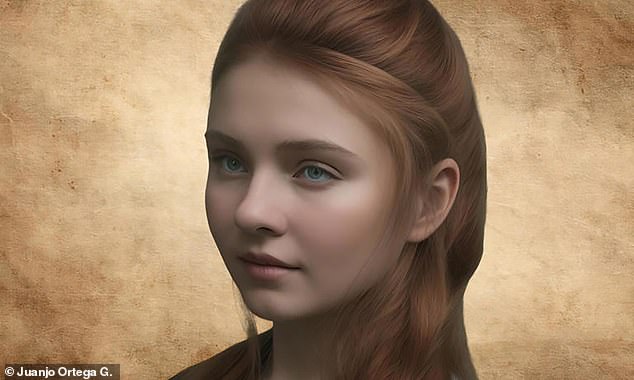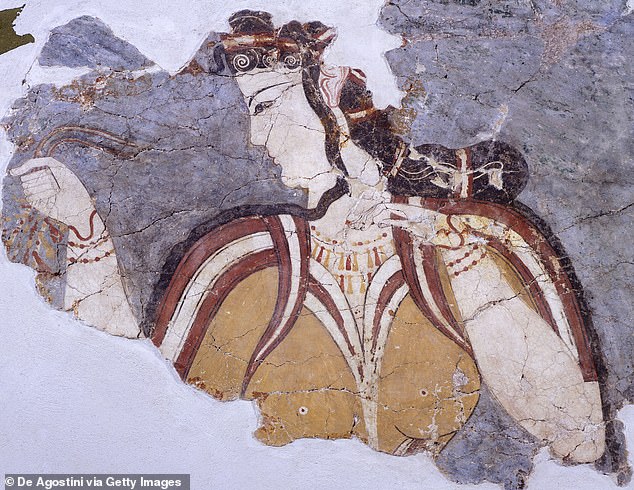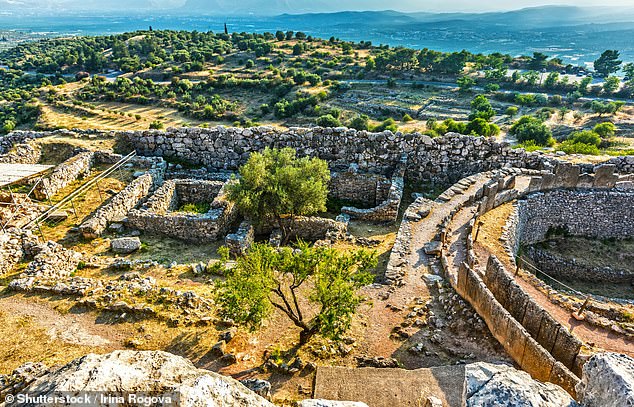Digital reconstruction has revealed the face of a royal who lived 3,500 years ago in the late bronze age Mycenae, Greece, and she looks ‘incredible modern’.
The woman was in her mid-30s when she was buried in a royal cemetery on the Greek mainland at Mycenae and was discovered in the 1950s.
Mycenae is an ancient city located on a small hill between two larger hills on the Argolid Plain in Peloponnese, Greece.
In Homer’s epic poems, Mycenae is ruled by the mythical King Agamemnon, who led the Greek forces in the Trojan War.
The historian who commissioned the digital reconstruction, Dr Emily Hauser, told the Observer: ‘She’s incredibly modern. She took my breath away.
‘For the first time, we are looking into the face of a woman from a kingdom associated with Helen of Troy – Helen’s sister, Clytemnestra, was queen of Mycenae in legend – and from where the poet imagined the Greeks of the Trojan war setting out.
‘Such digital reconstructions persuade us that these were real people.’
Dr Hauser, a senior lecturer in classics and ancient history at the University of Exeter, called the reconstruction ‘incredibly exciting’ and added that the woman died ‘at the beginning of the late bronze age, several hundred years before the supposed date of the Trojan war’.

The woman was in her mid-30s when she was buried in a royal cemetery on the Greek mainland at Mycenae and was discovered in the 1950s

The clay reconstruction of the same woman used as a reference for the digital reconstruction

Mycenae (pictured) is an ancient city located on a small hill between two larger hills on the Argolid Plain in Peloponnese, Greece
The digital artist who created the image, Juanjo Ortega G., used a clay reconstruction of the same woman as a reference which was made in the 1980s by Manchester University – pioneers of one of the major facial reconstruction methods.
Development and innovation in forensic anthropology, DNA analysis, radiocarbon dating and 3D digital printing, have dramatically improved reconstructions of ancient people.
The woman was buried with an electrum face mask and a warrior kit of weapons – including three swords which were assumed to be associated with the man buried beside her, but are now believed to belong to her.
Dr Hauser, whose new book Mythica: A New History Of Homer’s World, Through The Woman Written Out Of It releases next week, said: ‘The traditional story is that, if you have a woman next to a man, she must be his wife.’
Facial similarities had previously been noted but DNA confirmed they were brother and sister.
‘This woman was buried there by virtue of her birth, not her marriage. That tells us a different story about how important she was,’ Dr Hauser added.
She continued: ‘Data that is coming out is suggesting that far more of what archaeologists call warrior kits are associated with women than with men in these late bronze age burials, which is completely overturning our assumptions of how women are associated with war.’
Dr Hauser explained that archaeological evidence and DNA analysis were allowing ‘the real women of ancient history to step out of the shadows’.
She said: The woman’s bones suggest she suffered from arthritis in her vertebrae and hands, perhaps ‘evidence of repeated weaving, a common and physically wearing activity among women, and one which we have seen Helen undertaking in the Iliad.
‘So this is such a wonderful way to connect real women’s experiences to the ancient myths and tales.’







